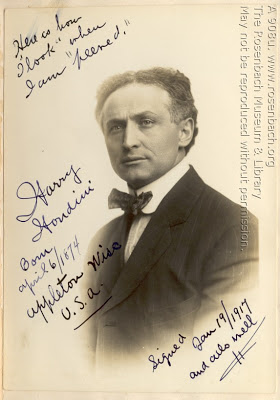
A colleague brought this unfortunate news item to my attention last week. It seems one of the world’s largest collections of Harry Houdini material went up in flames last December when a crack-smoking burglar set the collector’s house on fire. The smoker, Mr. Jarrod Frederick, escaped the blazing home of Dr. Randall Wolf even if Houdini’s papers did not. (Trust me: nearly everyone, except the Gray Lady, has made magic/escape artist puns about this story.) Frederick had parked in Wolf’s garage — and closed the door behind himself — and then apparently drove right through the garage door while fleeing the fire. Pieces of the door were reportedly still trailing his car when police stopped him. The Cincinnati Enquirer quotes Frederick’s lawyer, Greg Cohen: “This was a total random of act of drug-induced delusion resulting, unfortunately, in the destruction of somebody’s home.” Indeed. Dr. Wolf, you have our sympathies.
Anyway, at the end of the New York Times article (first link above) Dick Brooks of the Houdini Musuem in Scranton, (yes, it’s a real place, and it’s more than just the home of Michael Scott. It’s the Electric City! I’m a fan of light rail and any city that was the first to have electric trolleys is all right by me. Even if The Washington Post Magazine really did describe it as “awfuler” than the “awful” city of Wilkes-Barre. Yeah, it’s funny. But it’s unkind, so why are you laughing? The Post also apparently said Scranton was in the running for the distinction of being the “armpit of America.”  Personally, I would vote would for the Pizza Ranch in Jackson, Minnesota, with its all-you-can-eat
Personally, I would vote would for the Pizza Ranch in Jackson, Minnesota, with its all-you-can-eat smorgasbord, of pickle- and Canadian bacon-topped pizzas, especially if you have to sit there all day during a blizzard while your van is getting a new alternator for the third time in two weeks, but that’s just one man’s opinion…) What was I saying? Ah yes, the article quotes Mr. Brooks saying that Houdini-ana is scattered in collections and institutions all over the country. I don’t know if he’s aware that the Rosenbach is one of those institutions, but it is.
smorgasbord, of pickle- and Canadian bacon-topped pizzas, especially if you have to sit there all day during a blizzard while your van is getting a new alternator for the third time in two weeks, but that’s just one man’s opinion…) What was I saying? Ah yes, the article quotes Mr. Brooks saying that Houdini-ana is scattered in collections and institutions all over the country. I don’t know if he’s aware that the Rosenbach is one of those institutions, but it is.
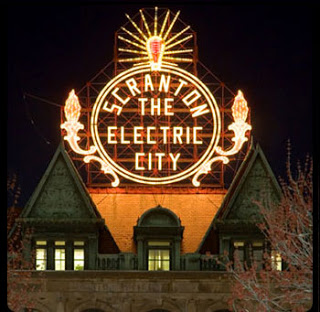 Houdini accumulated a vast library (now at the Library of Congress) and in 1917 he sent a letter to the Dr. Rosenbach seeking books for it relating to the stage. The letter came in an envelope with what has to be one of the greatest addressings in postal history. Behold:
Houdini accumulated a vast library (now at the Library of Congress) and in 1917 he sent a letter to the Dr. Rosenbach seeking books for it relating to the stage. The letter came in an envelope with what has to be one of the greatest addressings in postal history. Behold:
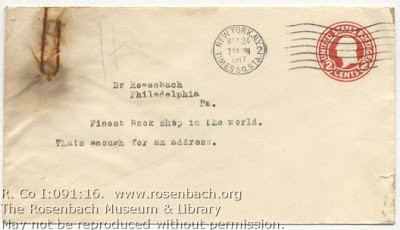 In case you having trouble reading it, the envelope is addressed to “Dr. Rosenbach/Philadelphia/Pa./Finest book shop in the world./That’s enough for an address.” Can’t beat that. Houdini’s missive obviously arrived at its intended destination. Here’s the letter itself:
In case you having trouble reading it, the envelope is addressed to “Dr. Rosenbach/Philadelphia/Pa./Finest book shop in the world./That’s enough for an address.” Can’t beat that. Houdini’s missive obviously arrived at its intended destination. Here’s the letter itself: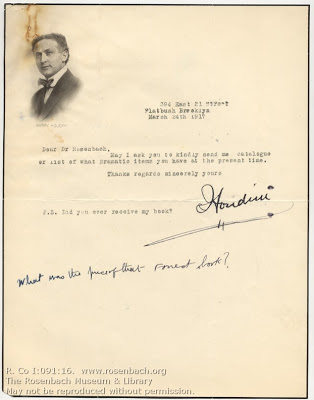 He had previously visited Dr. R. in his shop and sent him a copy of his 1908 book on magic, The Unmasking of Robert Houdin, but other than that, they don’t seem to have had much of a relationship, professional or personal. Now, a couple things about this letter. I don’t have much of substance to say about it, but I’ll go ahead anyway. One can’t help but notice his photograph on the letterhead. The Library of Congress has a sample of this letterhead, too. They suggest Houdini’s use of photos on his letterhead was a promotional device. That’s partly what I figured. It couldn’t have been cheap to produce this kind of thing at the time, so it had to be worth the investment — if it was a promotional tool, that would have helped justify the expense. I also wondered if it was a way to streamline the process of answering fan requests for photos. (If fans even wrote celebrities asking for photos in those days… Well, if they wrote without requesting or expecting a photo it was a bonus to get one on the stationery — brilliant, Harry!) The sheet shown on the Library of Congress’s website has a note in Houdini’s hand indicating it was made according to a secret process in Stuttgart, Germany. Of course Houdini’s stationery has to be produced by a secret process in a foreign country. How else would the master of escape and magic get his letterhead? The Library of Congress document also has a note in Houdini’s hand that states that he adopted this letterhead in 1913 after the death of his mother. The Library of Congress understands his note to mean that the new letterhead reflected a more sober Houdini, still mourning his loss. How is that somber tone represented: in the simple design, the lack of extraneous promotional headlines? I’m not sure. It’s interesting to note, though, Houdini pasted into book he sent Doctor Rosenbach (mentioned in the post-script to his letter to Dr. R.) a signed copy of the same photo that appears on the letterhead (see the top of this post.) In regard to the photo, he writes that it shows what he “look[s]” like when he’s “peeved.” I suppose peeved is one way you might feel after your mother dies but something seems a little incongruent about that reading of the photo when considered along side the notion that it reflects his sorrow. Yeah, you’re right, he inscribed the photo four years later, so who knows what was going on. Curious, though, isn’t it? Either way, Houdini’s picture is on his letterhead and that’s the sign of a true superstar. Another sign of a true superstar is the one name signature. If you’re a celebrity with a name like “Houdini” (and I suppose that’s partly why Ehrich Weiss chose “Harry Houdini” as a stage name — it has a little more zip to it) I guess you can get away with signing just your last name. Especially if your picture and full name are printed at the top of the page, right? It doesn’t surprise me that he would sign his letters that way, but it’s fun to see that he actually does. And it adds a bit of panache to his persona, essential for a magician, I would think. (So does Prince sign his letters just “Prince” or does he add “Rogers Nelson,” too? And what about all of those Brazilian soccer players? Ronaldo? Ronaldinho? Kaká ? Fred?) I should note that the other Houdini signatures at the Rosenbach include his first name, as in the photo above and in the other inscription in the book:
He had previously visited Dr. R. in his shop and sent him a copy of his 1908 book on magic, The Unmasking of Robert Houdin, but other than that, they don’t seem to have had much of a relationship, professional or personal. Now, a couple things about this letter. I don’t have much of substance to say about it, but I’ll go ahead anyway. One can’t help but notice his photograph on the letterhead. The Library of Congress has a sample of this letterhead, too. They suggest Houdini’s use of photos on his letterhead was a promotional device. That’s partly what I figured. It couldn’t have been cheap to produce this kind of thing at the time, so it had to be worth the investment — if it was a promotional tool, that would have helped justify the expense. I also wondered if it was a way to streamline the process of answering fan requests for photos. (If fans even wrote celebrities asking for photos in those days… Well, if they wrote without requesting or expecting a photo it was a bonus to get one on the stationery — brilliant, Harry!) The sheet shown on the Library of Congress’s website has a note in Houdini’s hand indicating it was made according to a secret process in Stuttgart, Germany. Of course Houdini’s stationery has to be produced by a secret process in a foreign country. How else would the master of escape and magic get his letterhead? The Library of Congress document also has a note in Houdini’s hand that states that he adopted this letterhead in 1913 after the death of his mother. The Library of Congress understands his note to mean that the new letterhead reflected a more sober Houdini, still mourning his loss. How is that somber tone represented: in the simple design, the lack of extraneous promotional headlines? I’m not sure. It’s interesting to note, though, Houdini pasted into book he sent Doctor Rosenbach (mentioned in the post-script to his letter to Dr. R.) a signed copy of the same photo that appears on the letterhead (see the top of this post.) In regard to the photo, he writes that it shows what he “look[s]” like when he’s “peeved.” I suppose peeved is one way you might feel after your mother dies but something seems a little incongruent about that reading of the photo when considered along side the notion that it reflects his sorrow. Yeah, you’re right, he inscribed the photo four years later, so who knows what was going on. Curious, though, isn’t it? Either way, Houdini’s picture is on his letterhead and that’s the sign of a true superstar. Another sign of a true superstar is the one name signature. If you’re a celebrity with a name like “Houdini” (and I suppose that’s partly why Ehrich Weiss chose “Harry Houdini” as a stage name — it has a little more zip to it) I guess you can get away with signing just your last name. Especially if your picture and full name are printed at the top of the page, right? It doesn’t surprise me that he would sign his letters that way, but it’s fun to see that he actually does. And it adds a bit of panache to his persona, essential for a magician, I would think. (So does Prince sign his letters just “Prince” or does he add “Rogers Nelson,” too? And what about all of those Brazilian soccer players? Ronaldo? Ronaldinho? Kaká ? Fred?) I should note that the other Houdini signatures at the Rosenbach include his first name, as in the photo above and in the other inscription in the book: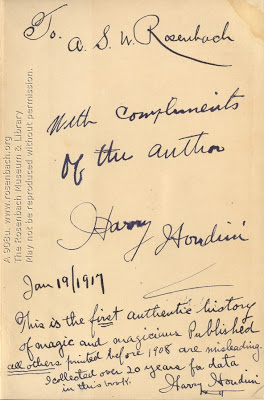 I’m really curious about these inscriptions. Houdini pulled out all the stops in sending the book — he signed it twice; touted his achievement in writing the book: the “first authentic history of magic and magicians” based on twenty years of research; pasted in a signed photo (I can’t imagine Rosenbach having put it there), inscribed with some familiar-sounding comments; and added a promotional piece detailing his triumphant victories over the German police:
I’m really curious about these inscriptions. Houdini pulled out all the stops in sending the book — he signed it twice; touted his achievement in writing the book: the “first authentic history of magic and magicians” based on twenty years of research; pasted in a signed photo (I can’t imagine Rosenbach having put it there), inscribed with some familiar-sounding comments; and added a promotional piece detailing his triumphant victories over the German police:
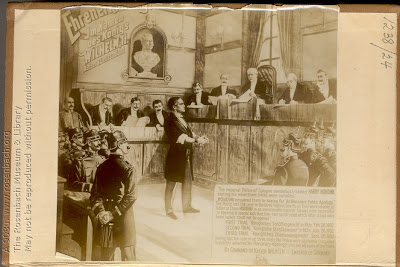 Was he trying to accomplish something with this gift? Maybe he was trying to ingratiate himself with the Doctor, a possibility which makes me wonder if he really didn’t know the shop’s adress or was just trying to flatter Rosenbach with the envelope? Was he trying to impress A.S.W.? Was his self-promotion switch stuck in the on-position? Returning to the photo seen at the top of this post, why did he list his birthdate? Why did he lie about where he was born (in Budapest, not Appleton, Wisc. — though he always said he’d been born in Appleton)? Why did he write “and
Was he trying to accomplish something with this gift? Maybe he was trying to ingratiate himself with the Doctor, a possibility which makes me wonder if he really didn’t know the shop’s adress or was just trying to flatter Rosenbach with the envelope? Was he trying to impress A.S.W.? Was his self-promotion switch stuck in the on-position? Returning to the photo seen at the top of this post, why did he list his birthdate? Why did he lie about where he was born (in Budapest, not Appleton, Wisc. — though he always said he’d been born in Appleton)? Why did he write “and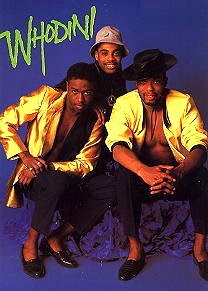 all’s well” beneath the date? Does he mean he felt well that day (a strange comment for a signed photograph) or that his life was going well at that time (didn’t his name and his accomplishments speak for themselves?) I don’t know what was going on. Clearly, I’m assuming that the way Houdini presented this book to Rosenbach tells us something about who he was. Maybe it does. Maybe it doesn’t. All I know is that now I’ve utterly confused myself. Who is this Houdini? Whodini? How’d he get out of all those tight jams? And why was he always ending up in handcuffs and chains, sometimes half naked? What does he have to do with Scranton? Why am I writing about him?
all’s well” beneath the date? Does he mean he felt well that day (a strange comment for a signed photograph) or that his life was going well at that time (didn’t his name and his accomplishments speak for themselves?) I don’t know what was going on. Clearly, I’m assuming that the way Houdini presented this book to Rosenbach tells us something about who he was. Maybe it does. Maybe it doesn’t. All I know is that now I’ve utterly confused myself. Who is this Houdini? Whodini? How’d he get out of all those tight jams? And why was he always ending up in handcuffs and chains, sometimes half naked? What does he have to do with Scranton? Why am I writing about him?
I guess I was writing about Houdini to assure his public that the limited holdings of Harry Houdini material at the Rosenbach are safe. In an effort to preserve these and other collections items, we don’t allow open flames, burglars, illicit drugs, intoxicated persons, or automobiles in the museum. Of course, I’m sure poor Dr. Wolf had similar rules for his house. Once again, Dr. Wolf, you have our sympathies.
Images above:
1. [Unknown photographer]: portrait of Harry Houdini with AMs inscriptions. [Photo: 1913; Inscriptions: 1917]A908u
2 and 3. Harry Houdini (1874-1926) Envelope and typed letter signed to A.S.W. Rosenbach.
Brooklyn, N.Y.: March 24, 1917.
R. Co. I:091:16
4. Harry Houdini (1874-1926). Inscription to A.S.W. Rosenbach in The Unmasking of Robert Houdin.
[Brooklyn, N.Y.]: January 19, 1917.
A 908u
5. Harry Houdini, unidentified clipping, tipped into The Unmasking of Robert Houdin.
[n.d.]A 908u
